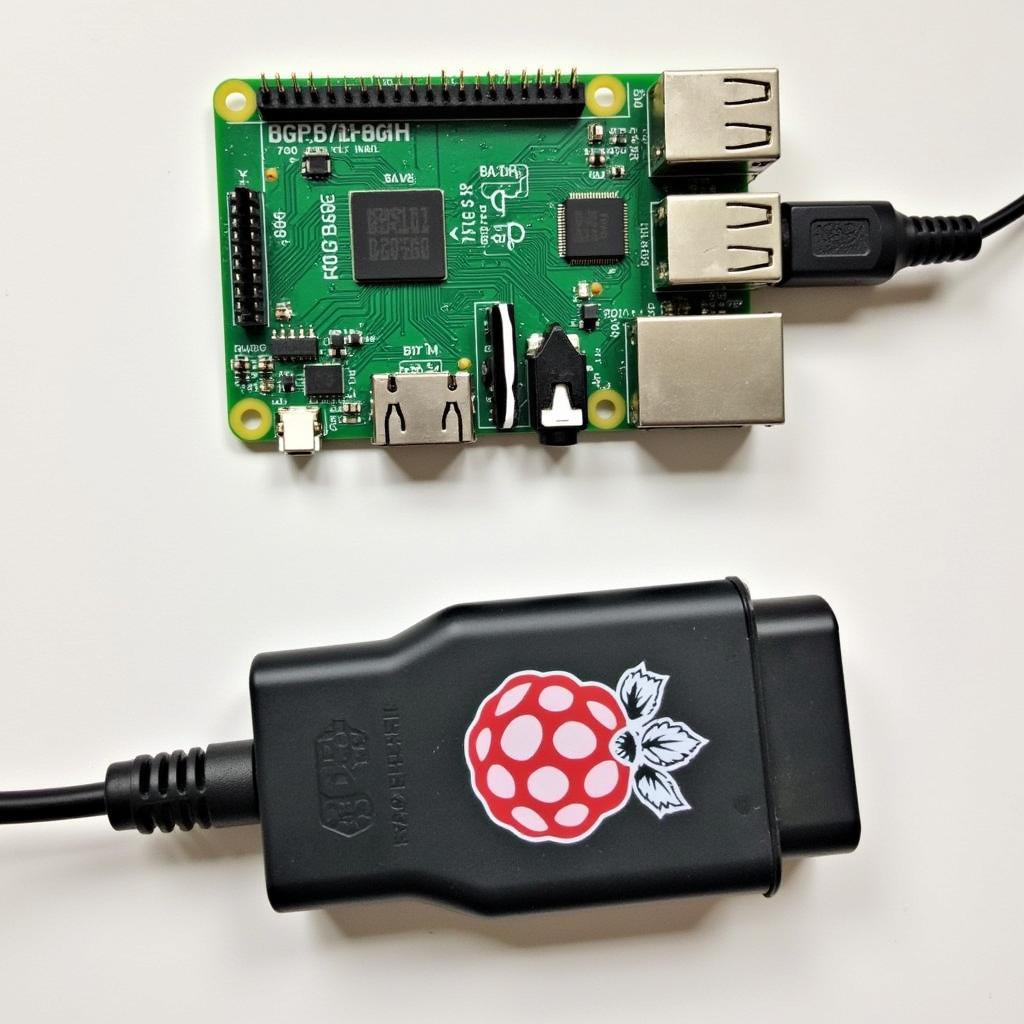The question “Can Raspberry Pi output in OBD2?” piques the curiosity of many car enthusiasts and tech hobbyists alike. The prospect of leveraging the power and affordability of a Raspberry Pi for vehicle diagnostics is undeniably enticing. But is it truly possible?
Delving into the World of OBD2 and Raspberry Pi
Before we unravel the answer, let’s clarify the fundamental components involved:
- OBD2 (On-Board Diagnostics, Second Generation): This standardized system, mandatory in vehicles since 1996, provides a digital gateway to access real-time engine and vehicle data.
- Raspberry Pi: A series of credit-card-sized single-board computers renowned for their versatility and affordability, making them a favorite among DIY enthusiasts.
Can a Raspberry Pi Directly Output in OBD2?
The straightforward answer is no. A Raspberry Pi alone cannot directly output data in the OBD2 protocol. Here’s why:
- Protocol Mismatch: OBD2 communicates using a specific protocol (SAE J1850 or ISO 9141, depending on the vehicle), while Raspberry Pi’s GPIO pins operate on standard digital signals.
- Voltage Incompatibility: OBD2 operates at a nominal voltage of 12V, whereas Raspberry Pi typically uses 5V. Direct connection could damage both devices.
Bridging the Gap: OBD2 Adapters Enter the Scene
The key to unlocking the potential of Raspberry Pi for OBD2 communication lies in using an OBD2 adapter. These adapters, often USB-based, act as intermediaries:
- Protocol Conversion: They translate between the OBD2 protocol and a format understandable by the Raspberry Pi (typically serial communication like UART or USB).
- Voltage Regulation: They ensure safe voltage levels for both devices, protecting them from damage.
Unleashing the Power: Applications of Raspberry Pi in OBD2 Diagnostics
With the right OBD2 adapter, a world of possibilities opens up:
- Real-time Data Monitoring: Display engine RPM, speed, coolant temperature, and other crucial parameters on custom dashboards created using Python libraries.
- Fault Code Reading and Clearing: Access and interpret diagnostic trouble codes (DTCs) to pinpoint vehicle issues, and clear them after repairs.
- Performance Logging: Record data from various sensors during driving sessions for later analysis, aiding in performance tuning and fuel efficiency improvements.
- DIY Car Security Systems: Implement features like GPS tracking, remote locking/unlocking, and even engine immobilizers.
Choosing the Right OBD2 Adapter for Your Raspberry Pi Project
Selecting the appropriate OBD2 adapter is crucial for seamless integration:
- Communication Interface: Opt for adapters with USB or UART interfaces compatible with the Raspberry Pi.
- Protocol Support: Ensure the adapter supports the specific OBD2 protocol used by your vehicle.
- Software Compatibility: Verify compatibility with Raspberry Pi-friendly operating systems like Raspberry Pi OS and OBD2 software libraries.
Conclusion
While a Raspberry Pi cannot directly output in OBD2, the strategic use of an OBD2 adapter unlocks a world of possibilities for DIY car diagnostics and beyond. By bridging the communication and voltage gaps, you can harness the power of Raspberry Pi to monitor your vehicle’s health, enhance its capabilities, and delve into the fascinating world of automotive technology.


